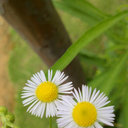Silencing of α-amylase StAmy23 in potato tuber leads to delayed sprouting.
Atslēgvārdi
Abstrakts
Potato tuber dormancy is critical for the postharvest quality. The supply of carbohydrates is considered as one of the important factors controlling the rate of potato tuber sprouting. Starch is the major carbohydrate reserve in potato tuber, but very little is known about the specific starch degrading enzymes responsible for controlling tuber dormancy and sprouting. In this study, we demonstrate that an α-amylase gene StAmy23 is involved in starch breakdown and regulation of tuber dormancy. Silencing of StAmy23 delayed tuber sprouting by one to two weeks compared with the control. This phenotype is accompanied by reduced levels of reducing sugars and elevated levels of malto-oligosaccharides in tuber cortex and pith tissue below the bud eye of StAmy23-deficient potato tubers. Changes in soluble sugars is accompanied by a slight variation of phytoglycogen structure and starch granule size. Our results suggest that StAmy23 may stimulate sprouting by hydrolyzing soluble phytoglycogen to ensure supply of sugars during tuber dormancy.


